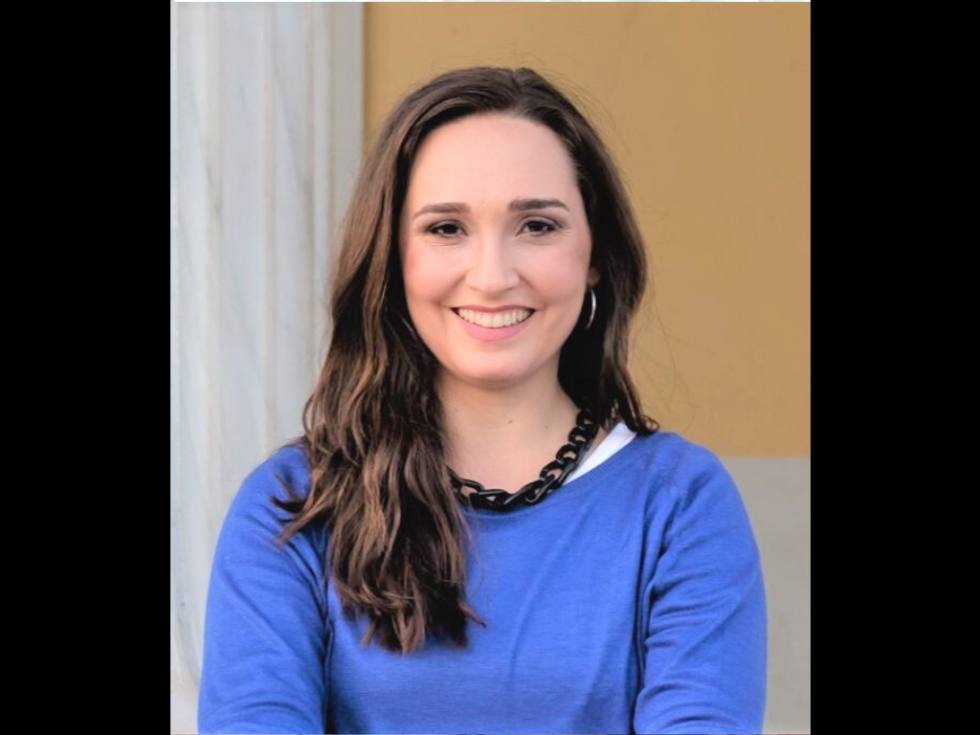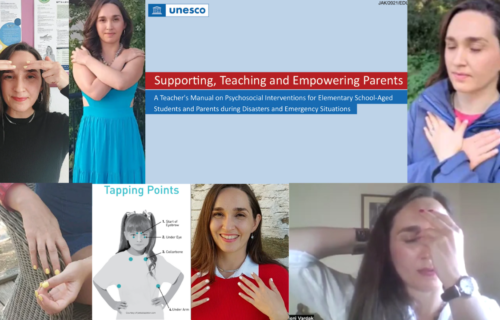
Reducing Student Stress Levels
WHAT’S THE ISSUE: How can we measure student stress levels using the Enneagram? There are apps and technologies we can buy to measure our Heart Rate Variability (HRV), which is a helpful biological indicator that confirms our experience of traumatic stress. However, these measurements are of limited educational value, if our goal is to work on improving student wellbeing. Students who’s wellbeing, resilience and productivity are compromised by unhealthy levels of stress benefit from education that supports them in increasing their self-awareness and self-reflection skills. And this is where the Enneagram can help.
The Enneagram can be used to help students become more aware of their particular signs of disintegration/stress and integration/growth. The Enneagram can also be used as a conversational tool to discuss and measure a student’s stress levels and personal development.
In this article, I address the following questions:
- What is the Enneagram & why does it matter?
- Why & how are big businesses using the Enneagram?
- Why & how am I using the Enneagram in my private mentoring programs?
In my work as a Youth Mentor for Stress Relief, I’ve found the Enneagram framework to be a valuable resource for supporting students who are willing to work on increasing their self-awareness, self-motivation, and ability to remain meaningfully productive in difficult times.
WHAT IS THE ENNEAGRAM & why does it matter?
“The Enneagram is a system of human personality that helps explain why people behave the way they do. It is essentially a map of personality, behavior and motivation. It has been referred to as the ‘GPS of wisdom’. I think of it as a tool for compassion.”
(Lynn Roulo, 2016, “Headstart for Happiness”)
I first learned about the Enneagram from Enneagram and Kundalini Yoga teacher Lynn Roulo, through her book on the Enneagram and her 9 live Enneagram training events in 2016-2017. As Lynn often says when she’s teaching the Enneagram, there’s no such thing as a ‘better’ or a ‘worse’ personality; only a healthy and an unhealthy version of that personality. Below, you’ll find a list of the 9 personality types that form the Enneagram Personality framework. If you want to learn more about the particular sub-types of each of these 9 personalities, you’ll find concise descriptions in Lynn’s book, Headstart For Happiness: A Guidebook Using Kundalini Yoga and The Enneagram. If you are curious to learn more about the 9 Enneagram personality types, you can click on the links below:
THE 9 ENNEAGRAM PERSONALITY TYPES
You will notice that each of these personality types can present themselves in various levels of stress. You will understand why having a stress management routine is an act of love for your family and for humanity. When we make a commitment to working on reducing our own stress levels, we choose to work on increasing our own ability to experience genuine happiness and wellbeing. We can then positively affect and influence the happiness and wellbeing of others.
WHY & HOW ARE BIG BUSINESSES USING THE ENNEAGRAM?
“Different companies have different personality trait testing…Shopify is very partial to a system called Enneagram…Enneagram has worked very very well for us…We want people to find out what areas they have a bit of a Fixed Mindset on, and to get them to…acquire a bit more of a Growth Mindset.”
(Tobi Lütke, 2019, Tim Ferris Show podcast interview)
Tobi Lütke, the CEO of Shopify, uses the Enneagram to empower his employees who wisely encourages to become more self-aware and growth oriented. Having employees who have a Growth Mindset is good for a company’s ability to grow and for the work environment. It is also good for individual employees. The Enneagram is a great tool for personal and professional development, which is a win-win situation for companies and employees alike.
Another successful company that’s using the Enneagram as a personal and professional development tool is Dropbox. Dropbox was co-founded by Arash Ferdowski and Drew Houston. While initially skeptical about the value of the Enneagram when Arash first introduced it to him, Drew Houston changed his mind after experiencing the benefits for himself and his company. Dropbox use the Enneagram to understand what fundamentally motivates their employees, and for their leaders and employees to be more aware of their blind spots.
“Most people are familiar with Myers–Briggs. It’s a personality typing system, but then you read it…[and] you don’t actually do anything with it. I found Enneagram to be similar in terms of there are a limited number of personality types, but it’s much more a theory about what fundamentally motivates people…Enneagram is very valuable…[I]t’s been very helpful both to do individually and with your team because what you learn is like, okay, here are my blind spots.”
(Drew Houston, 2018, Tim Ferris Show interview)
The fact that the CEOs of big companies like Shopify and Dropbox are using the Enneagram framework for their personal development and business development may lead one to conclude that the Enneagram’s main value is for business, not education. Indeed, if you were to Google “Forbes” and the “Enneagram”, you would find a whole bunch of articles talking about how you can apply the Enneagram to business objectives, such as the Forbes article written by Jack Craven in 2017. In contrast, you would be hard pressed to find a single article in the Times Educational Supplement (TES) or in other major education magazines/online publications that speaks to the value of the Enneagram for educating students about stress and wellbeing.
Why should students have to wait until adulthood to learn about the Enneagram (if they are lucky enough to work in an Enneagram-aware work environment)? Why should the importance of learning how to reduce our stress levels be less of a priority than learning how to do well in exams…when stress, health and wellbeing are what determine our quality of life? Why can’t we start teaching the Enneagram to stressed and overwhelmed teenagers and college students? When students improve their stress management skills and habits, they become more self-motivated learners. They see how using self-soothing tools can help them to become happier, healthier, and more confident people. Their productivity and quality of life improves. Isn’t that what all ultimately want for ourselves and our family: to be happy, healthy, and thriving?
WHY & HOW AM I USE THE ENNEAGRAM as a youth mentor?
“Teens reported that their stress levels during the school year far exceeded what they believe to be healthy…and topped adults’ average reported stress levels (5.8 for teens vs. 5.1 for adults).”
(Sophie Bethune, American Psychological Association)
A. WHY I USE THE ENNEAGRAM
Anyone who’s recently worked in schools is aware that student’s have been experiencing increasing levels of stress in the last two decades than ever before. Countless studies by Psychology researchers and Psychology associations worldwide confirm that that stress is a major barrier to student wellbeing, globally. As a professional Youth Mentor for Stress Relief, I work with students who are stuck in stress and overwhelm and are willing to work on reducing their stress levels and improving their study/emotional self-care habits.
I used to wait until we were 2 or 3 months into a mentoring program to introduce my mentee and their parents to the Enneagram. But I noticed is that withholding this information from parents and students only serves to perpetuate unhelpful levels of parent-child arguments that get in the way of my work as a Youth Mentor for Stress Relief. That’s why I now introduce the Enneagram in all my private mentoring programs as soon as I possibly can. I’ve found the Enneagram to be an effective tool for compassion between parents and kids. It can help to diffuse tension, clarify any confusion, and reduce misunderstandings. Parents who choose to look into their own Enneagram stress response can start to become more aware of how their own unhelpful behaviors under stress, may be triggering their child into experiencing even more stress. I’ve learned that the sooner parents and kids understand each other’s stress-based behaviors, the quicker we can start to work on the root causes of the stress-related problems.
Introducing the Enneagram into my mentoring programs improves the quality of conversation all around. Students become more self-motivated and aware that it’s up to them to choose whether they want to work on becoming the best version of themselves. I’m often in awe at how much quicker we start to make progress, after a student sees who they are capable of becoming. I’ve found the Enneagram to be useful in accelerating progress when I am teaching students to appreciate the deeper reasons why using practical tools and techniques to manage their stress is so important. It’s also been an invaluable resource when working with teenagers to help them become more aware of their particular stress response.
B. HOW I USE THE ENNEAGRAM
When I feel I have enough information about a student’s experience of stress to be able to notice patters of thoughts, behaviors and motivation, I ask them to look at the one or two Enneagram Personality types that seem to be a best fit. I then invite the student to look at all the other Enneagram personality types, in case there’s one I missed that they feel is a more accurate representation of their reality.
After a student I am supporting ‘identifies’ themselves in one of the 9 Enneagram Personality types, I ask them to read the levels of development for their particular personality type that correspond to 3 broad categories of stress and growth:
- Healthy levels of stress and growth
- Average levels of stress and growth
- Unhealthy levels of stress and growth
I then get them to look at the more precise levels of development for their dominant Enneagram personality type, to see if they can figure out which of the 3 categories most accurately represents their current level of development.
Below, you’ll find an example of the Levels of Development for someone with the Enneagram Type 9 Stress/Growth response, as defined by The Enneagram Institute. You can click on the image below, or you can click here to read more.
Here are the kinds of things I hear students say. One student who identified as an Enneagram Type 9 said that what resonated with her the most was the word “stubborn” and the phrases “unwillingness to exert self”, “thinking becomes hazy”, and “fear of conflicts”. These all constitute “Average Levels” of development for the Type 9 stress/growth response. Another example is of a student who identified as an Enneagram Type 4, who saw himself in the phrases “moody and hypersensitive”, “heighten reality through fantasy”. After some dialogue and frank discussion, he also came to acknowledge that his desire to escape into “living in a fantasy world” of Harry Potter in Hogwarts was contributing to his “becoming increasingly impractical and unproductive” in his study responsibilities. A third example is of a student who identified as an Enneagram Type 5, who saw herself in “begin conceptualizing and fine-tuning everything before acting, working things out in their mind”, “a disembodied mind”. After some dialogue and frank discussion, she also acknowledged that she can get “cynical and argumentative” in times of stress.
I’ve noticed that this conversational Self-Assessment Enneagram exercise is often a motivating, eye-opening, and sometimes even a humbling experiencing for the students I work with who are stuck in a state of stress and overwhelm. Understandably, it’s often hard for students to acknowledge that they are displaying some of the lower levels of the Enneagram behaviors. That’s why I adopt a gentle approach of doing a brief conversational Self-Assessment exercise in the form of an informal conversation as a start, and I then wait a few weeks before we revisit the student’s initial self-assessment, to invite a more honest/aware and detailed self-reflection.
Students begin to understand the difference between who they really are, as a person, and their particular stress response pattern. They can set personal development goals, and think about who they want to become, if they choose to work hard on becoming the best version of themselves. It’s like the penny finally drops, and they understand why the stress management tools and techniques we do, and the self-care habits we talk about in our mentoring sessions matter. Not just for their ability to achieve their personal and academic goals, but also for their ability to experience greater levels of health, happiness and wellbeing.
REFERENCES
- Bethune, S. (2014) “Teen stress rivals that of adults: APA’s Stress in America™ survey finds unhealthy behavior in teens, especially during the school year.” American Psychological Association. Vol 45, No 4.
- Lynn Roulo, “Enneagram”.
- Lynn Roulo (2016) Headstart for Happiness: A Guide Book Using Kundalini Yoga and The Enneagram
- Enneagram Institute, “How The Enneagram System Works”.
- Jack Craven (October 31st 2017) “The Combination To Your Team’s Recurring Problem: The Enneagram Personality Test”.
- The Tim Ferris Show podcast (August 29th 2018, Episode #334), “The Tim Ferris Show Transcripts: Drew Houston”.
- The Tim Ferris Show podcast (February 7th 2019, Episode #359) “Tobi Lütke: From Snowboard Shop to Billion-Dollar Company”.
About the author

Eleni Vardaki offers private and small-group stress relief services online to parents, teachers, and students. Her mission is to help bridge the gap between mainstream education and the wellbeing skills students need to thrive in the 21st century. She believes in doable, sustainable whole-school interventions for student wellbeing that focus on transforming the school culture.
LEARN MORE
You may also enjoy Eleni’s other articles on stress:





